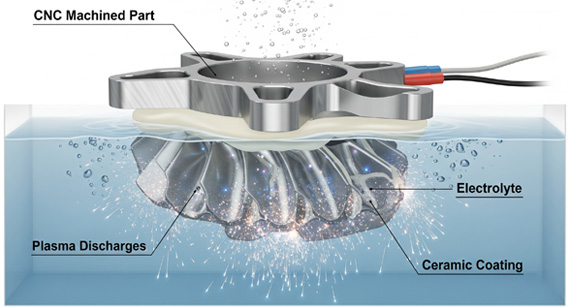15 years one-stop China custom CNC machining parts factory
The VMT blog is dedicated to sharing our hard-earned knowledge in prototype manufacturing. We hope these articles will help you optimize your product designs and gain deeper insight into the world of rapid prototyping. Enjoy the read!
Get an Instant Quote VMT
VMT  2025 09 06
2025 09 06 True white anodizing isn’t feasible because anodic pores don’t accept white dye and the oxide’s light-scattering makes whites look gray or chalky. Instead, use powder coating, electrophoretic coating, or PEO/ceramic finishes for durable white on aluminum parts, then specify sealing and gloss to match appearance and corrosion targets.
 66
66
 Read more
Read more
 VMT
VMT  2025 09 05
2025 09 05 Micro-arc oxidation (MAO) or plasma electrolytic oxidation (PEO) creates thicker, harder, and more wear-resistant ceramic coatings compared to anodizing. While anodizing is ideal for cost-effective corrosion protection, MAO offers superior durability, thermal resistance, and adhesion, making it more suitable for high-performance CNC machined parts.
 66
66
 Read more
Read more
 VMT
VMT  2025 09 05
2025 09 05 420 SS is a grade of Stainless Steel that has good hardness, wear resistance and moderate corrosion resistance. It can be heat treated which means you can harden and temper it to get the exact strength and properties you need. It’s a customizable choice for many applications.
 66
66
 Read more
Read more
 VMT
VMT  2025 09 03
2025 09 03 Yes, cast iron is magnetic due to its high iron content and ferromagnetic atomic structure. However, its magnetism varies with type—gray, white, ductile, or alloyed cast iron—and environmental factors like temperature or impurities. Cast iron can attract magnets, but its strength depends on composition and processing.
 66
66
 Read more
Read more
 VMT
VMT  2025 09 02
2025 09 02 Some iron oxides are magnetic. Magnetite (Fe₃O₄) is strongly magnetic; maghemite (γ-Fe₂O₃) is ferrimagnetic but weaker; common rust (α-Fe₂O₃ hematite) is weakly magnetic at room temperature. Knowing which oxide you have prevents contamination, measurement errors, and rework in CNC machining services and CNC machining factories.
 66
66
 Read more
Read more
 VMT
VMT  2025 08 28
2025 08 28 Micro-Arc Oxidation (MAO), also called Plasma Electrolytic Oxidation (PEO), is an advanced surface treatment that uses high-voltage plasma discharges in an electrolyte bath to form a hard, ceramic-like oxide coating on metals such as aluminum, magnesium, and titanium. This process enhances hardness, corrosion resistance, and wear properties, making it ideal for CNC machined parts.
 66
66
 Read more
Read more
 VMT
VMT  2025 08 28
2025 08 28 Yes, cobalt is a ferromagnetic metal, meaning it is strongly attracted to magnets and can be magnetized itself. Its robust magnetic properties are primarily due to its electron configuration, specifically the unpaired electrons in its atomic orbitals, which create a net magnetic moment. This inherent characteristic makes cobalt a critical element in various magnetic applications, including high-performance magnets and magnetic recording media. Our cnc machining factory frequently works with materials, including magnetic alloys, that demand an intricate understanding of their properties for precision manufacturing.
 66
66
 Read more
Read more
 VMT
VMT  2025 08 25
2025 08 25 Yes, nickel is magnetic. As a ferromagnetic metal, nickel can be attracted to magnets and even retain magnetism under certain conditions. Its magnetism depends on atomic structure, temperature, and alloying elements. This property makes nickel essential in magnetic alloys, sensors, motors, and CNC machined parts for advanced applications.
 66
66
 Read more
Read more
Ready To Start Your Next Project?
Get Instant Quote

Request a Free Quote
Send us a message if you have any questions or request a quote. We will get back to you ASAP!







